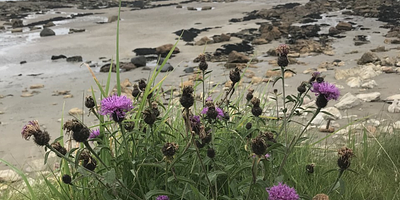
Terrestrial Plants
‘True’ terrestrial plants are multicellular organisms that absorb water and inorganic substances through their roots and make food in their leaves through photosynthesis.
There are different types of plant:
- Vascular – Plants with vascular tissue (structures that transport water and nutrients around their bodies). Vascular plants make up over 90% of all plant species. Types of vascular plant include 'angiosperms' (plants that produce flowers) and 'gymnosperms' (woody plants, i.e. pine trees).
- Non-vascular – Plants that lack vascular tissue (water only enters their body by diffusing through the plant’s cells), e.g. mosses.
All terrestrial plants are made up of 3 body parts: Roots, stems and leaves. Roots take up water and nutrients from soil, stems provide support and allow materials to flow between roots and leaves, and leaves are the photosynthesising powerhouses.
Plants are the start of many foodwebs – life on earth wouldn’t be the same without them!
Different species are found in different habitats, each designed to survive in particular conditions. Coastal plants have evolved special adaptations to cope with salty and sandy environments. Those found in very salty conditions, such as saltmarshes, are called ‘halophytes’, and those found in very dry conditions, such as shingle beaches, are called ‘xerophytes’.
Those existing in the ‘intertidal’ part of the shore also have to cope with immersion in saltwater twice a day - it’s tough being a plant at the seaside!
Click here to download our ‘Coastal Plant Spotter Sheet’ to help you identify common species you may find on your coastal walks.
